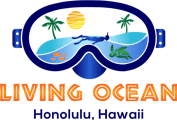FREQUENTLY ASKED QUESTIONS






FAQS
-
Check-in time is 15 minutes prior to your scheduled boat departure time. Please arrive early to ensure that you do not miss the boat. Out of respect for our guests we attempt to leave on time. Refunds unfortunately cannot be processed for guests who are late and miss the boat.
-
There is a parking lot at the harbor right next to our boat. Parking is $2 per hour. During peak times such as weekends and holidays it can be difficult to find parking. Please allow additional time to find parking or consider taking a taxi/rideshare service.
-
Please bring a towel, sunscreen, hat and sunglasses. In an attempt to conserve plastic, if you have your own water bottle please bring it, although water is provided free of charge onboard. We suggest wearing your swimming clothes to the trip. All snorkeling equipment will be provided but if you already have your own you are welcome to bring it along.
-
Our turtle snorkeling trip is a 2-hour tour with approximately 1 hour of in-water snorkeling time. Our sunset cruises are 90 minutes, and our Waterslide, Snorkel and Diamond Head Cruise is 3 Hours.s
-
We do require basic swimming ability for anyone wishing to enter the water on this trip. If you do not know how to swim you will need to stay on the boat, but can enjoy seeing turtles that come to the surface to breathe!
-
The minimum age for our snorkeling tour is 3 years old and our sunset tour is 5 years old. We do require that all guests purchase a ticket and make a reservation.
-
We provide everyone with a “snorkeling vest.” This is an inflatable vest that will help you float on the surface while you are snorkeling.
-
We love snorkeling and being in the water. Unfortunately, swimming and alcohol do not mix well. Because of this, alcohol is not permitted until after we are done in the water. If you BYOB please refrain from consuming alcohol until after the in-water portion of the tour and please do not bring glass containers. We do provide sodas, juices, water and snacks. Guests who arrive and are under the influence of drugs or alcohol will not be permitted aboard on our snorkeling trips. On our BYOB Sunset Cruises you are welcome to bring alcohol we just ask that you do not bring glass containers.
-
Any child under the age of 16 is required to be accompanied by a paid adult on any of our tours. All children under the age of 18 must have a guardian complete their liability waiver. Our waivers can be completed online so this can be done ahead of time and remotely.
